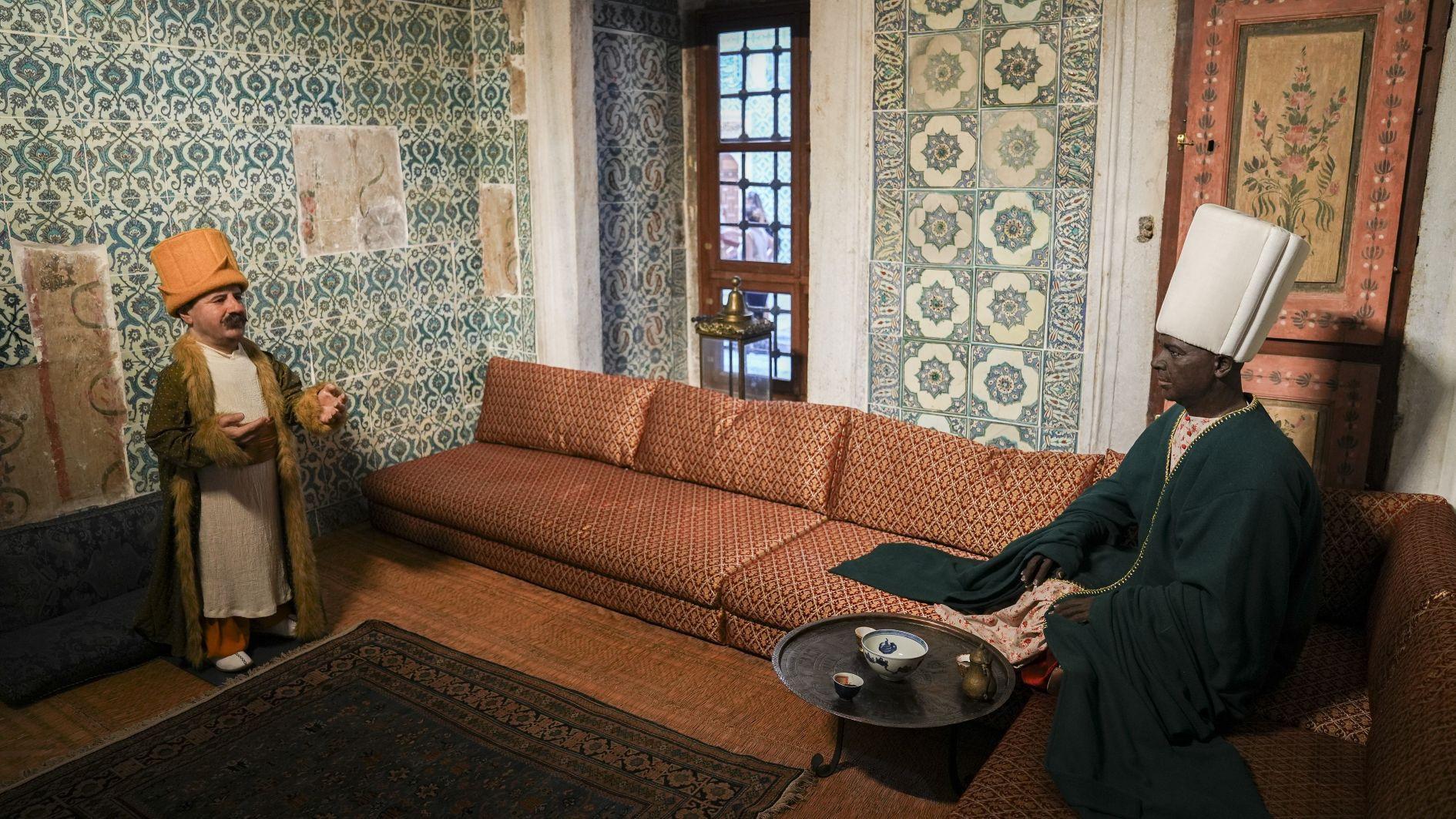
The Karaağalar Ward, located within the Harem section of Istanbul’s Topkapı Palace and operated by Türkiye’s Presidency of National Palaces, has opened to visitors for the first time in its history following the completion of a detailed restoration project.
The ward, historically the living quarters of the karaağalar — black eunuchs tasked with the security of the imperial harem — stands out for its three-story structure, İznik tilework, hand-painted decorations (kalem işi), Edirnekâri-style cupboards and its unique interior layout reflective of the Ottoman classical period.
Speaking to the press, Dr. Yasin Yıldız, President of the National Palaces, said the building, constructed in 1665 during the reign of Sultan Mehmed IV, is one of the most authentic and significant spaces within the classical-era Harem. “Because it replaced earlier quarters destroyed in a major harem fire, the restoration required great sensitivity and care,” Yıldız said.
He noted that the karaağalar — brought from regions such as Sudan, Somalia and Ethiopia — played a crucial role in the Ottoman palace system, ranking just below the grand vizier in the imperial protocol and overseeing the inner workings of the Harem. Their status brought them substantial wealth, enabling them to establish foundations and build mosques, inns and fountains across Istanbul. Many also became custodians of Islamic holy sites in Mecca and Medina.
Yıldız stated that the recently restored ward embodies the architectural spirit of the 17th century and functioned almost like a school for young eunuchs entering palace service. New arrivals were initially housed on the upper floor, moving down to lower levels as they gained seniority.
He added that the restoration, one of the palace’s longest-running projects, took over ten years and involved structural repair, conservation of portable artifacts and the reinstallation of period furnishings. “These objects help us tell the story of the lifestyle and hierarchy that existed in this secluded world,” he said.
The ward is part of a broader Harem restoration initiative. Other recently reopened spaces include the rooms of Sultan Ahmed I and the Fruit Room (Yemiş Odası). Yıldız said future openings will include the Dwarfs’ Ward (Cüceler Koğuşu) and the Apartments of the Consorts (Kadın Efendiler Daireleri), which feature exceptional examples of 16th- and 17th-century decorative arts.
“Ultimately, our goal is to open the entire Harem to visitors,” Yıldız said. “Every section is a unique part of Ottoman cultural heritage.”
Historically, eunuchs at Topkapı were divided into two main groups: akağalar (white eunuchs) who served in the palace’s outer quarters, and karaağalar (black eunuchs) who protected and managed the Harem. Often recruited as boys and trained rigorously in palace protocol, many rose to the highest ranks of palace administration, with the Chief Black Eunuch (Darüssaade Ağa) holding immense political and religious influence.
The building features several important inscriptions, including a basmala and a prayer dated to 1667 on the entrance walls, emphasizing its historic and religious significance.
Throughout the restoration, conservators worked with art historians and architects to ensure fidelity to original materials and techniques. Efforts included cleaning, plaster repairs, wood preservation and the reapplication of traditional decorative painting.
Today, visitors can experience not only the architecture but also the cultural atmosphere of the Karaağalar Ward through wax figures, archival materials and objects from the palace’s collections, offering rare insight into the lives of the men who served as silent powerbrokers within the Ottoman imperial court.